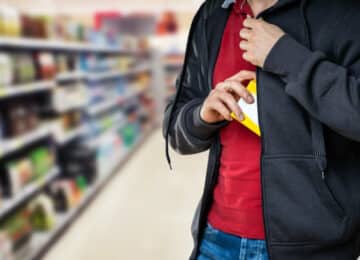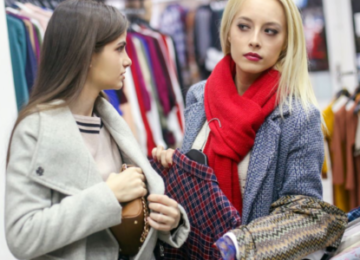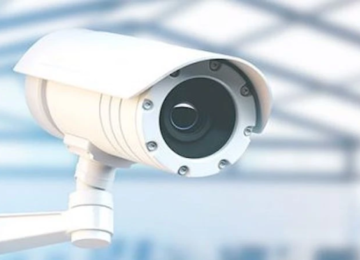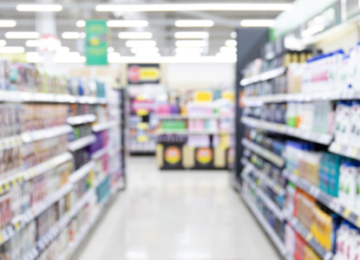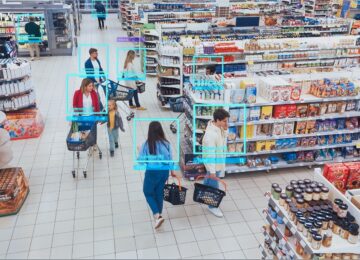Proving a Shoplifting Charge: What Should the Retailer Do?
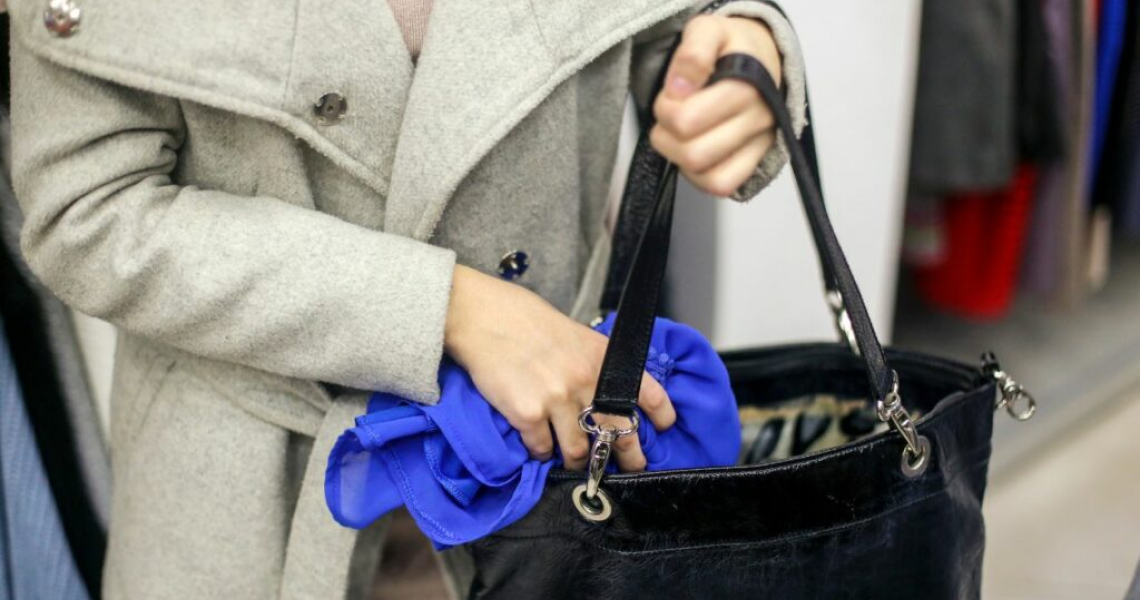
Retailers have seen a significant rise in shoplifting in recent years. No store is immune, including greengrocers and even pharmacies. And to complicate matters further, there is no profile of the typical shoplifter. As part of their efforts to fight this scourge, retailers equip their stores with video surveillance systems. But what should a retailer do when they detect an incident of shoplifting? How can a retailer prove that shoplifting has occurred, especially in cases where the perpetrator manages to leave the store?
Shoplifting Under French Law
Under the French Penal Code, shoplifting is not considered a specific offence. Rather, it’s classified as simple or aggravated theft depending on the circumstances. The offence is punishable by the courts with a prison sentence and a fine. In the case of simple theft, for example, this is 3 years in prison and a €45,000 fine. Depending on the value of the goods, the retailer may choose one of three possible courses of action.
Goods Worth €300 or Less
In cases of shoplifting of goods valued at €300 or less, the retailer may request the return of the stolen goods or the payment of appropriate compensation (in accordance with Article 311-3-1 of the French Criminal Code). The retailer can demand payment for the goods before recording the shoplifter’s name in the store’s database. The shoplifter will be banned from entering the store in the future. If it’s a repeat offender, the retailer should call in the police.
Involving a Judicial Police Officer
The retailer can request the intervention of a judicial police officer (JPO). This may be a mayor or deputy mayor, a gendarmerie or police officer. The JPO will draw up a police report of the incident, and fine the shoplifter accordingly. The retailer also has the possibility to file a complaint.
Filing a Complaint
Following a shoplifting incident, the retailer concerned can file a complaint regardless of the value of the goods stolen. To initiate this procedure, the retailer should go to a police station or gendarmerie where the complaint will be recorded and forwarded to the public prosecutor. The complaint can also be sent directly to the public prosecutor by post.
How Can You Prove a Shoplifting Charge?
Are you a retailer or security guard who has detected shoplifting in your store? What should you do if the suspect denies having committed the theft?
Catching a Shoplifter in the Act (Flagrante Delicto Offences)
According to French law (namely Article 53 of the Code of Criminal Procedure), a flagrante delicto offence is an offence where the suspect is found in the act of committing or has just committed said offence. In the case of shoplifting, the suspect must be found in possession of the items. Article 73 of same code stipulates that, in the case of a flagrante delicto offence punishable by imprisonment, any person is entitled to apprehend and bring the perpetrator before the nearest judicial police officer.
There are several ways to catch a shoplifter in the act. The retailer (or security guard) may witness the incident with their own eyes or via a monitor (if the store is equipped with surveillance cameras). The retailer will then proceed to apprehend the shoplifter, in order to demand the goods be returned. Legally, the retailer is not allowed to search the individual without their consent. However, the retailer may ask the individual to open their bag and empty their pockets. It is a strictly visual inspection. It’s important to note that video footage is evidence of a flagrante delicto offence.
The retailer or security guard can then either call the police and file a complaint, or come to an amicable settlement with the shoplifter.
What to Do If the Shoplifter Manages to Leave the Store
To prove a shoplifting charge, tangible evidence is required. Video footage is considered tangible evidence, and can therefore be used in a judicial investigation. This is particularly important when the retailer concerned does not know the identity of the shoplifter. This may be the case if the shoplifter does not want to disclose their identity, or manages to leave the store without being intercepted. The retailer should still file a complaint even if they are unable to identify the shoplifter, providing the necessary video footage to the investigators.
The Capacity to Rely on Efficient Video Surveillance Equipment
Bearing in mind that video surveillance footage and images do indeed constitute admissible evidence, it is recommended that your supermarket, pharmacy or store be properly equipped. This involves placing cameras in strategic locations around the store.
Regulations on Installing Video Surveillance in Stores
It’s important to remember that the installation of video surveillance in stores is subject to a number of rules:
- as stores are considered public places, they require an authorisation from the Prefect of the Département;
- shoppers must be informed of the presence of surveillance cameras;
- video surveillance must not intrude on shoppers’ privacy (e.g. cameras are prohibited in changing rooms and toilets);
- surveillance images may only be accessed by the store’s security personnel or manager.
Using Smart Video Surveillance
Your store’s video surveillance can effectively be enhanced and optimised by means of a powerful AI-based video surveillance system, such as Veesion software. It also proves to be an invaluable tool for catching shoplifters red handed. Thanks to an IA algorithm, the software can automatically detect acts of shoplifting in real time. This algorithm is actually based on the shoppers’ gestures (and not on facial identification). It detects suspicious actions by analysing a shopper’s gestures and movements, such as placing an item in a backpack. The security guard is then sent a suspicious behaviour alert accompanied by a video clip on their phone, tablet or computer. In addition to possessing the necessary proof, the guard can intercept the individual while attempting to leave the store without paying for the items.
What’s more, the software does away with all the issues associated with needing to have security guards view the surveillance monitors: the software operates autonomously, 24/7. Simply install the software on the video recorder; there is no need to change the store’s existing surveillance cameras.
In summary, a store must catch a shoplifter in the act and/or must possess the necessary video footage or images to be able to prove the shoplifting charge. To that end, a video surveillance system is essential. If you are looking to enhance the efficiency of your video surveillance system and help your security guards to detect acts of shoplifting, it makes sense to use AI. This new technology makes it easier to detect suspicious behaviour than can be done with the naked eye. It helps to ensure that security officers spot every sign of criminal behaviour and can intervene quickly.
The most popular
Related news
Discover what Veesion can do for you. Do you have one or more stores?
Our team will contact you within 48 hours
